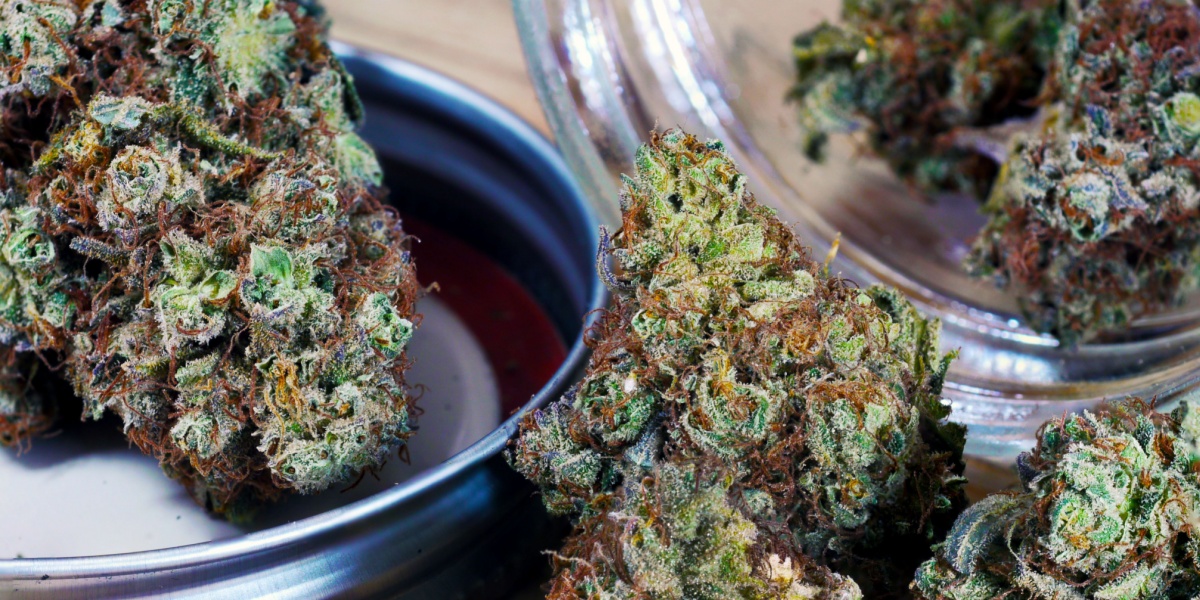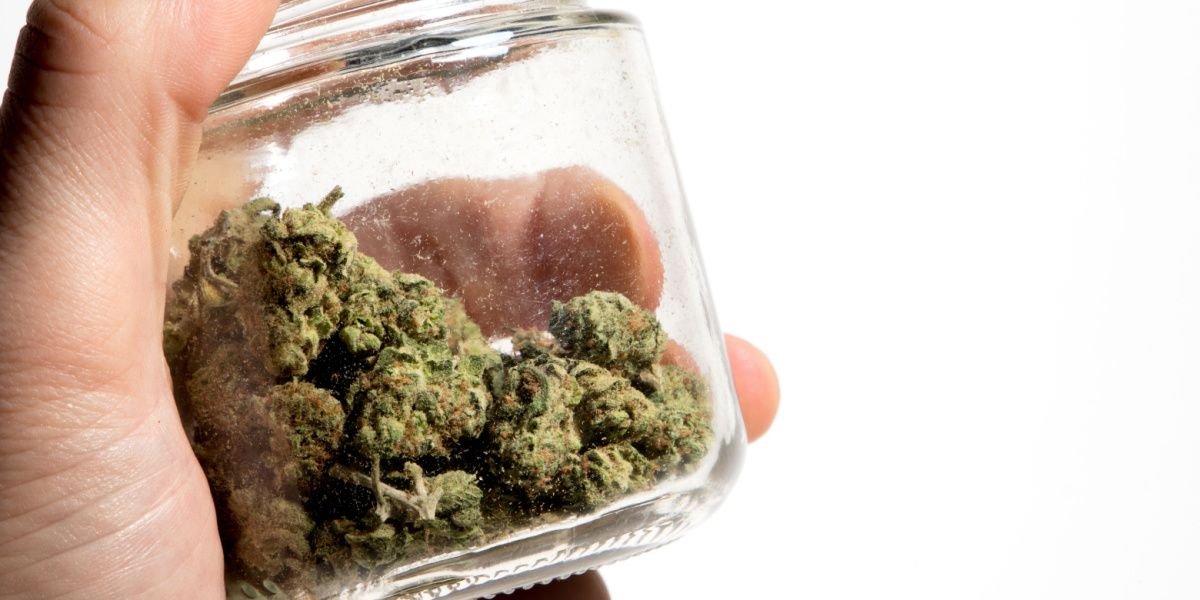Recent changes in the US have seen cannabis and cannabis derivatives legalized for medicinal, and sometimes recreational, use in certain states. These include California, Illinois, New York, and Ohio.[1] This has led to a resurgence of interest in the effect cannabis and related products have on the body.
The medicinal properties of cannabis are increasingly researched and accepted, but they’re also complex. The cannabis plant contains over 70 different chemicals, which may play a role in its medicinal effect. Delta-9 THC is one of the most commonly researched, along with cannabidiol.[2]
Here’s everything you need to know about delta-9 THC.
- Delta-9 THC is a psychoactive compound in cannabis that interacts with cannabinoid receptors, producing therapeutic and intoxicating effects.
- While delta-9 THC may help with conditions like chronic pain, migraines, and PTSD, it also carries risks such as paranoia, hallucinations, and mood changes.
- Synthetic delta-9 THC products like dronabinol and nabilone are FDA-approved for managing chemotherapy-induced nausea and AIDS-related appetite loss.

What is delta-9 THC?
Delta-9 tetrahydrocannabinol (delta-9 THC) is an active ingredient found in cannabis that contributes to its psychoactive effects.[3] It is the second most abundant cannabinoid after cannabidiol (CBD). Delta-9 THC is found in both cannabis and hemp plants, though it is more abundant in cannabis.
Delta-9 THC is commonly referred to simply as THC.
Delta-9 THC activates cannabinoid 1 receptors (CB1Rs) and cannabinoid 2 receptors (CB2Rs), located in areas of the brain including the basal ganglia, frontal cortex, and hippocampus.[2] It is believed that delta-9 THC’s psychoactive properties come from its binding to CB1Rs, while CB2R activation may have an anti-inflammatory effect.[2]
Synthetic preparations of delta-9 are used for reducing nausea and vomiting following chemotherapy and increasing appetite in patients with AIDS.[3]
How is delta-9 made?
Delta-9 THC occurs naturally in both cannabis and hemp.[4] It is typically extracted using either carbon dioxide or alcohol (ethanol) and then refined through distillation. Distillation separates out the different chemicals found within the plant, allowing producers to create a concentrated oil containing high levels of just delta-9 THC.
Two synthetic (man-made) delta-9 THC compounds are licensed by the FDA. These are dronabinol and nabilone.[3]
How is delta-9 THC taken?
There are many ways to take delta-9 THC, depending on whether it is being used alone or in combination with other substances. Examples include oral ingestion (edibles), smoking or vaping oils or plant material, creams, capsules, or suppositories.[5] Rarely, research studies have administered it intravenously.[2] Nabiximols, a THC and CBD combination medication, is taken as an oro-mucosal spray to treat symptoms of multiple sclerosis.[2]
Delta-9 THC edibles
Delta-9 THC can be incorporated into a variety of foodstuffs, including gummies, chocolates, or drinks. These offer a consistent dose and do not have the health risks of inhaled substances.
Delta-9 THC topical applications
Delta-9 THC can be infused into creams, balms, or sprays and applied to the skin. This offers the opportunity to focus THC on a specific, targeted area with minimal effects on the rest of the body.
Delta-9 THC inhalants
Delta-9 THC purified oils can be inhaled through either smoking or vaping. This is an effective method to allow drugs to enter the bloodstream but can cause breathing or lung problems.
Effects of delta-9 THC
Delta-9 THC is responsible for some of the recognized psychoactive and therapeutic effects of cannabis. Research into delta-9 THC was limited by the legal position of cannabis in the US but is now increasing as laws are easing.
Evidence suggests that delta-9 THC may have a number of therapeutic benefits, but there are also concerns about its increased availability and use.
Potential benefits of delta-9
Many cannabinoids, including delta-9 THC, have anti-tumor properties, and research is ongoing as to whether it may slow the development of breast cancer. It is not currently available for use in cancer patients, however.[6]
Delta-9 THC is also being considered for the treatment of obstructive sleep apnea, fibromyalgia, and chronic neuropathic pain.[3]
When taken with CBD, delta-9 THC has been shown to be effective against migraine.[7]
Some states have licensed cannabis for the treatment of PTSD.[2] As the main psychoactive agent of cannabis, delta-9 THC probably has a role to play in this treatment.
Potential risks of delta-9
As with any drug, delta-9 THC comes with the risk of side effects and adverse events. Some are common, while others are rare but severe.[3]
Common side effects of taking delta-9 THC include:
- Dysphoria (low mood)
- Hallucinations
- Paranoia
- Sedation
- Confusion
- Headache
- Low blood pressure
More severe side effects include reports of seizures and an increased risk of psychiatric disorders, including psychosis and schizophrenia, in vulnerable individuals.
Long-term use of delta-9 THC can lead to excessive vomiting (hyperemesis). Unlike other forms of hyperemesis, this is relieved by hot showers.
Some studies have also reported amotivational syndrome in long-term delta-9 THC users. This is characterized by a lack of interest in activities, low energy, and reduced mood.
There have been no reported human deaths by delta-9 THC overdose.
Delta-9 vs Other THC
Delta-8 THC is very similar to delta-9 THC but is generally considered to be milder. Delta-8 THC occurs naturally in the cannabis plant, but it is much less abundant than delta-9. It can be synthesized (produced) from CBD. It is still psychoactive and produces relaxation, pain relief, and euphoria. The adverse events associated with delta-8 THC are generally fewer and less severe than those resulting from delta-9 THC.[5]
Because delta-8 THC is less psychoactive than delta-9 THC and has fewer side effects, researchers are testing whether it might be a safer alternative for medicinal purposes.[5]
Tetrahydrocannabinolic acid (THCa) is found in both hemp and cannabis. It is not psychoactive itself, but when heated--for example, when being smoked or vaped--it becomes delta-9 THC.[9] THCa is sometimes processed into crystals or powder (called diamonds), which is then sprinkled onto cannabis to increase the levels of delta-9 THC.
Tetrahydrocannabiphorol (THCP) is another cannabinoid that operates in a similar way to delta-9 THC. There is relatively little information available about THCP, but it may be significantly more intense than delta-9 because it is more able to bind to CB1Rs.[10] It is unclear whether THCP occurs naturally in cannabis plants, but any products using it are chemically synthesized.
Final thoughts
Research into delta-9 THC has been slow, partially because of the association between cannabinoids and recreational drug use. Despite this, delta-9 THC has the potential to offer therapeutic benefits, and research is increasing.
It is possible that future medications based on delta-9 THC will include other cannabinoids to modify the psychoactive effects. Cannabidiol (CBD) may moderate some of the effects of delta-9 THC, making it less psychoactive.[12]
Although delta-9 THC is now legal in some states, there are concerns about the purity and testing regimes of some products. In a sample of legal delta-9 THC products tested, over half (66%) had levels of the drug more than 10% different from that stated on the packaging. Of the companies offering laboratory testing reports to customers, 71% did not test for impurities.[4] Consumers should exercise caution in a new and lightly regulated marketplace.


-guide-detail.jpg?v=1756808755)

-guide-detail.jpg?v=1722513387)